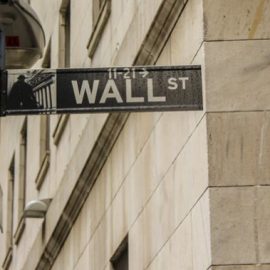

This article is an excerpt from the Shortform book guide to "Built to Last" by Jim Collins and Jerry Porras. Shortform has the world's best summaries and analyses of books you should be reading.
Like this article? Sign up for a free trial here .
What tactics and mindsets do visionary companies employ to constantly improve? What can you apply to your own organization to keep it moving forward?
Visionary companies never settle for “good enough.” Refusing to drift into complacency, they proactively seed discontent to push their employees to aim even higher. To achieve constant improvement, they also exercise long-term thinking and investments.
Continue reading to learn how visionary companies constantly improve.
Commit to Constant Improvement
It’s a myth that visionary companies are obsessed with beating their competitors. Visionary companies recognize that simply aiming to beat their competitors puts a cap on their goals—once they beat the competition, they can drift into contentment. But visionary companies recognize that contentment is one step away from complacency, which may then lead to decline. So, visionary companies are always on a quest for constant improvement.
The research found that in 16 out of 18 cases, visionary companies were more intent on self-improvement than their comparisons. In particular, they did two things to achieve constant improvement: They seeded discomfort by employing various mechanisms of discontent, and they made more long-term investments.
Seed Discomfort
Visionary companies want their people to feel discontented with their accomplishments because it pushes them to strive for more. This is necessary for constant improvement on an organizational level. To create motivational discontent, visionary companies use various tactics.
Tactic 1: Internal Competition
Instead of looking outside for motivation, visionary companies look inside and have employees engage in healthy competitions. Whether it’s brands trying to outdo each other in sales or R&D groups in a race to come up with the best new product, internal competition can fuel excitement, creativity, and innovation, and can ultimately be good for the bottom line and contribute to constant improvement.
- For example, in 1931, P&G had the best products in the market with no real competition in sight, so they decided to pit their brands against each other. This proved so effective at lighting a fire under their people that other companies—including their comparison company Colgate—started mimicking the practice many years later.
Tactic 2: Employee Rankings
Personal self-improvement is part of constant improvement on an organizational level. Some companies employ the internal competition tactic on a smaller scale, ranking individual performance. This serves to push employees to perform at their best—no one wants to find themselves at the bottom of the pack.
- For example, HP managers had to come up with a pooled ranking for all their people, so they would gather and have impassioned arguments until they came up with a ranked list.
Tactic 3: Forced Innovation
Some companies believe that necessity is the mother of invention, and so they create necessity by phasing out profitable products. This then pushes employees to come up with replacements to make up for the loss in sales.
- For example, Motorola forced itself to “innovate or die” by discontinuing older products that made up a big bulk of their sales.
Tactic 4: Think Like the Competition
Visionary companies put themselves in the shoes of their competitors to probe for strengths and weaknesses from a different perspective. The companies then use their insights to come up with plans to leverage strengths and safeguard themselves against weaknesses.
- For example, Boeing managers were tasked with seeing the company through the “eyes of the enemy.” They had to evaluate Boeing’s weaknesses and strengths and come up with a way to beat Boeing. They then had to determine how Boeing could respond to this threat.
Tactic 5: Year-On-Year Ledgers
Visionary companies track their year-on-year performance. This ensures that they stay on the path of constant improvement and enables them to immediately catch and remedy any downward trend.
- For example, Wal-Mart had “Beat Yesterday” ledger books that tracked sales figures and compared them to the previous years’ figures right down to the day. Year on year, they compared the first Monday, first Tuesday, and so on.
Think Long-Term
Constant improvement involves long-term thinking. Aside from creating discontent with the status quo, visionary companies also make it a priority to build for the long-term—and for visionary companies, “long term” means several decades. The research revealed that, compared to the comparison companies, visionary companies made more long-term investments in several areas: new property, plants, and equipment; research and development; early adoption of new management methods, industry practices, and technology; and human capital.
- For example, P&G, Disney, and IBM made big investments in their workforce, establishing “universities,” training centers, and development programs. This investment in human capital ensures that visionary companies continue to attract and retain great talent.
With an eye on the future, visionary companies refuse to sacrifice long-term goals for short-term profit. To them, making a quick buck is pointless if it won’t be good for the company in the long run.
- For example, Texas Instruments (TI) started producing cheap consumer products and dropped their prices to increase their market share, but this only eroded the company’s reputation as a maker of excellent products. In contrast, HP never stopped investing in human capital, hiring the brightest scientists and engineers, even when the company was struggling to stay afloat. This proved to be a worthy investment as the brilliant team came up with profitable products over the next two decades.
The quest for constant improvement is never-ending, because success is never final. Even when a company is at the top, there is no guarantee that they’ll stay there.
- For example, Howard Johnson was a successful business with 700 restaurants and hotels. But when Howard Jr. took over, he became complacent. He did not reinvest in the company and instead focused on short-term profits and cost control. In contrast, J. Willard Marriott, Jr. seeded discomfort by requiring detailed reports and annual performance reviews for all Marriott employees. He also reinvested in the company by spending a significant amount on employee training. By 1985, Marriott was performing seven times better than Howard Johnson.

———End of Preview———
Like what you just read? Read the rest of the world's best book summary and analysis of Jim Collins and Jerry Porras's "Built to Last" at Shortform .
Here's what you'll find in our full Built to Last summary :
- The key to longevity and success for your company
- Debunking the twelve myths about what it takes to build a visionary company
- The four key concepts behind enduring greatness






